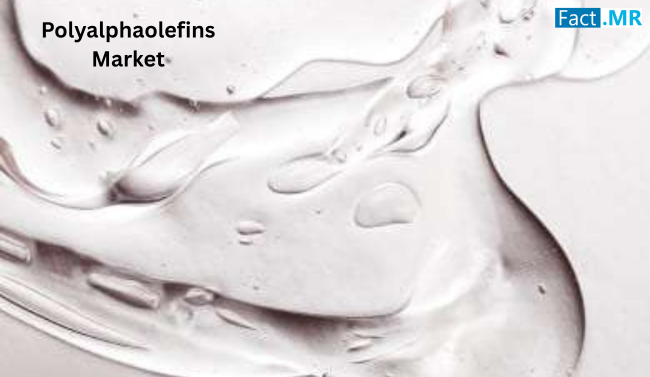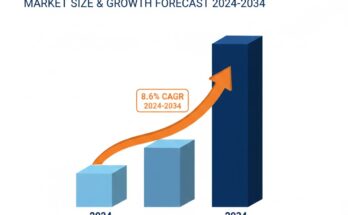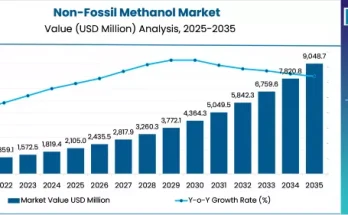The global Polyalphaolefins (PAO) market is on a steady growth trajectory, poised to expand significantly over the next decade. Valued at approximately USD 1.48 billion in 2023, the market is anticipated to reach close to USD 2.45 billion by 2030–2031, driven by increasing demand across automotive, industrial, and specialty sectors.
What Are Polyalphaolefins, and Why Do They Matter?
PAOs are fully synthetic base oils known for exceptional performance in extreme conditions. They offer superior thermal stability, oxidative resistance, and excellent low-temperature fluidity. These features make PAOs the go-to choice for formulating high-performance engine oils, gear lubricants, compressor oils, and greases. Their ability to extend equipment life, reduce volatility, and maintain fluidity under stress underscores their growing relevance in modern industries.
Market Segmentation & Applications
By Viscosity Grade:
- Low viscosity PAOs dominate the market due to their extensive use in engine oils, offering improved fuel efficiency and engine cleanliness.
- Medium viscosity PAOs strike a balance between cost and performance, widely used in gear and hydraulic oils.
- High viscosity PAOs are ideal for demanding applications such as synthetic greases, especially in outdoor and industrial settings where durability is essential.
By Application:
- The automotive segment is the largest consumer, utilizing PAOs in engine oils, transmission fluids, and coolants for both internal combustion and electric vehicles.
- Industrial applications such as hydraulic systems, air compressors, and metalworking fluids are seeing increased PAO adoption due to their high-load performance and stability.
- Niche areas like aerospace and marine also rely on PAOs for their reliability in extreme temperature ranges and high-stress conditions.
Regional Dynamics
Europe holds a significant market share due to stringent environmental regulations and a strong presence of premium automotive manufacturers. The region’s focus on sustainability and high-performance lubricants fuels consistent PAO demand.
North America continues to witness robust growth, driven by innovation in automotive technologies, aerospace advancements, and the region’s energy sector. Increased use of synthetic lubricants in heavy-duty and off-road vehicles further supports market expansion.
Asia-Pacific is emerging as the fastest-growing region. Rapid industrialization, urbanization, and a booming automotive industry in countries like China, India, Japan, and South Korea are propelling demand. Increasing awareness around performance and energy efficiency also contributes to growth.
Japan is set to show steady growth, driven by its advanced automotive and electronics sectors. In the U.S., the market continues to benefit from innovations in mobility and heavy industry.
Market Drivers & Trends
- Automotive Electrification
With the rise of electric vehicles, there’s a growing need for advanced lubricants and cooling fluids. PAOs are ideal for EV applications, offering excellent thermal stability and electrical insulation properties. - Industrial Expansion
As industrial sectors grow globally, demand for high-performance lubricants that ensure equipment longevity and reliability is increasing. PAOs provide exactly that. - Environmental Regulations
Tightening emission norms and regulations on oil formulations are pushing manufacturers to shift from conventional base oils to more eco-friendly and efficient synthetic alternatives like PAOs. - Focus on Sustainability
Companies are investing in circular solutions, including PAO recycling and the development of bio-based variants. These moves support ESG compliance and reduce environmental impact.
Market Challenges
- Price Sensitivity: PAOs are costlier than conventional base oils. For price-sensitive markets, especially in developing regions, adoption can be limited unless performance justification is clear.
- Feedstock Constraints: PAO production relies on high-purity alpha-olefins, which can be expensive and in limited supply, affecting production scalability and profitability.
- Competition from Group III Oils: Advancements in Group III base oils, which are cheaper yet offer comparable performance in some applications, pose a threat to PAO market share.
Strategic Outlook & Opportunities
- Premium Positioning: Brands that focus on premium performance—especially in EVs, aerospace, and industrial automation—will continue to find strong demand for PAO-based products.
- Regional Expansion: Companies looking to grow should target Asia-Pacific’s industrial and automotive hubs. Localization strategies can improve pricing and supply chain efficiency.
- Sustainable Innovation: Development of bio-based PAOs and closed-loop recycling systems presents a clear opportunity to differentiate and future-proof operations.
- Partnerships and R&D: Collaborating with OEMs and technology firms will help tailor PAO formulations to emerging needs, particularly in autonomous vehicles and green energy.
Conclusion
The Polyalphaolefins market stands at the intersection of innovation, sustainability, and performance. As industries modernize and environmental priorities shift, PAOs are increasingly becoming the backbone of high-quality lubrication systems.
Companies that focus on premium quality, invest in green innovations, and expand regionally—especially in high-growth markets—will be well-positioned to capitalize on this evolving landscape.



